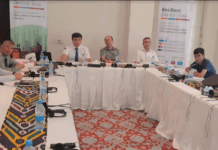Conducting thorough due diligence can be tedious work, but (as with most endeavors) putting in the effort yields the best results. Jim Nortz outlines a three-step process for effectively assessing intermediaries.
Read Part 2 here.
I am a terrible scientist.
At least that’s the conclusion I reached when I worked as a college co-op student at the Xerox Laboratories in Webster, New York many years ago. As a mechanical engineering student at the Rochester Institute of Technology, I was required to complete five co-op blocks in addition to four years of classes. The second co-op job I got was with Dr. Fred Schmidland, a brilliant theoretical physicist. One of the things Dr. Schmidland asked me to do was to test the electrical properties of several films that were deposited on a plastic plate. This experiment required me to sit in a laboratory by myself and perform repetitive measurements for hours on end. Each time I took a measurement, I noted the result on a graph. I hated this work. It was tedious. It was boring. As a consequence, I worked hard to finish this chore so I could move on to more interesting work.
At the end of the second day of making hundreds of measurements, I had produced a graph with a beautiful curve sloping gently upward. When I showed the results of my work to Dr. Schmidland, he rubbed his…


































